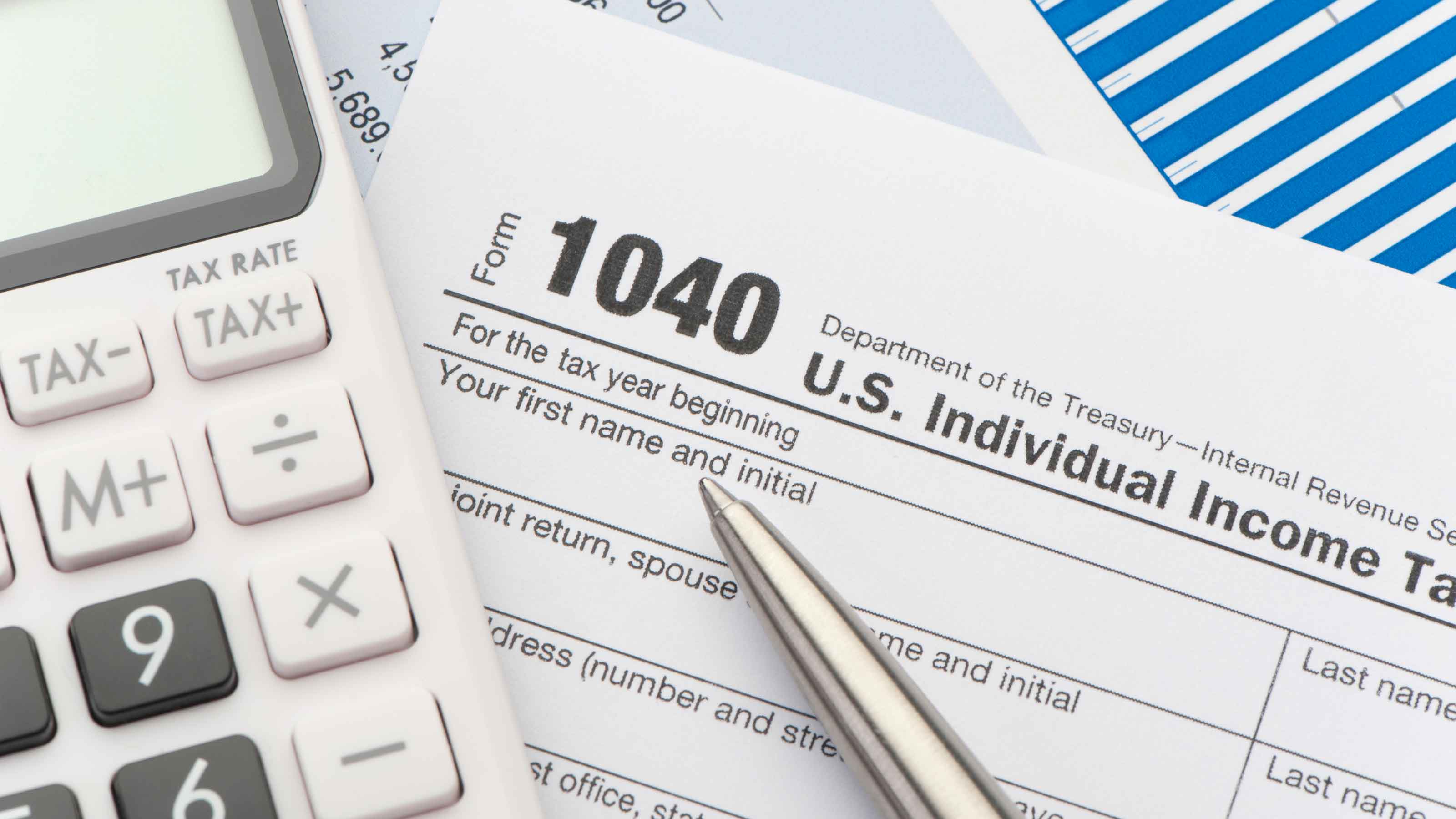How Obama's Tax Plan Could Affect You
The President-elect will likely demand quick action on a new round for stimulus checks, tax reflief for the jobless, and easier access to retirement plans for emergency cash.

Even before President-elect Barack Obama is sworn in as the 44th president of the United States in January, his transition team and congressional leaders will be working on ways to stimulate the economy and provide taxpayers with some relief to cope with the most challenging economy in more than 80 years.
With Democrats controlling both houses of Congress, lawmakers are likely to approve a new round of economic-stimulus checks during an expected lame-duck session, says Clint Stretch, director of tax policy for Deloitte Tax. But more-comprehensive changes , such as boosting income-tax and capital-gains rates on the wealthiest Americans, may have to wait until the economy strengthens, Stretch predicts. Growing federal budget deficits will make it difficult to fulfill many expensive campaign promises. And Congress will have significant influence over whatever proposals are ultimately enacted into law.
Lame-Duck Priorities

Sign up for Kiplinger’s Free E-Newsletters
Profit and prosper with the best of expert advice on investing, taxes, retirement, personal finance and more - straight to your e-mail.
Profit and prosper with the best of expert advice - straight to your e-mail.
No one knows for sure what might happen during a post-election session of Congress, but there are three likely targets for quick action: a new round of stimulus checks for taxpayers to grease the wheels of the economy, a move to suspend income taxes for the growing number of Americans collecting unemployment benefits, and temporary changes in tax rules affecting retirement-plan distributions.
During his campaign, Obama proposed adding a refundable tax credit of up to $500 per person ($1,000 per family) to offset payroll taxes on the first $8,100 of wages. That credit could be made retroactive to January 1, 2008, and is a likely vehicle to deliver another round of economic-stimulus checks, says Stretch.
| Row 0 - Cell 0 | Obama’s 10 Big Challenges |
| Row 1 - Cell 0 | Blog: Now What? How Obama Will Govern |
| Row 2 - Cell 0 | Health-Care Reform Takes Center Stage |
Temporarily eliminating the annual required minimum distributions from IRAs for Americans 70 and older was one of the few proposals on which Obama and Republican presidential candidate John McCain agreed. Both said it was unfair to force seniors to sell investments in the current bear market in order to fulfill their annual distribution requirements by December 31. Although suspending mandatory withdrawals would allow some investors to avoid selling stocks hammered by the market, it would help only those people who could afford to skip their annual required minimum distribution. Seniors who need the money will have to tap their IRAs regardless of whether they are required to do so. Obama has suggested that withdrawals up to the amount that would normally be required under minimum-distribution rules should be tax-free.
Obama also proposed that workers, many of whom are grappling with job losses and home foreclosures, be allowed to tap up to $10,000 of savings in their 401(k) or similar workplace-based retirement plan penalty-free in 2008 and 2009. Withdrawals would still be subject to the usual federal and state income taxes. Under current law, workers can borrow up to half of the balance in their 401(k) or similar workplace-based retirement plan up to $50,000. In some cases, they can qualify for a hardship withdrawal, subject to taxes and early-distribution penalties. You can't borrow from an IRA, but you can take early withdrawals that will be taxed and penalized. Roth IRA contributions (but not earnings) can be withdrawn any time tax-free and penalty-free.
[page break]
What to Expect
Broader changes to the tax code may have to wait until the Obama administration sorts through its priorities on how to deal with the economy, health care, energy independence and education. In general, Obama's tax proposals would benefit mainly low- and middle-income Americans and would increase taxes on high-income taxpayers, defined as families with income of more than $250,000 ($200,000 for individuals), according to an analysis by the nonpartisan Tax Policy Center, in Washington, D.C.
Obama says his plan—which would extend the current low income-tax and capital-gains-tax rates for the majority of Americans and add new tax breaks for low-income workers, students, seniors and homeowners—would result in a tax cut for 95% of Americans. He has indicated he would reinstate the top two income-tax rates of 36% and 39.5% and increase the maximum capital-gains rate from 15% to 20%. Those changes would apply to households with income of $250,000 or more ($200,000 for individuals). But the current rates on income and capital gains, as well as estate taxes, do not expire until 2010, so there is little pressure for immediate action.
Obama's tax proposal would exempt seniors with income of less than $50,000 from income taxes, create a mortgage-interest credit for homeowners who don't itemize deductions, and replace existing college-tuition subsidies with a refundable tax credit.
During the heat of the campaign, when gasoline prices topped $4 a gallon, Obama also proposed a windfall-profits tax on oil companies and said he would use the revenue to give filers an immediate $1,000 rebate to help cope with higher fuel costs. But with gasoline prices now at less than $3 a gallon and oil trading at about $70 a barrel, it is unclear whether a windfall-profits tax would still be appealing. However, the fact that ExxonMobil reported a record $14.8-billion profit in the third quarter -- up 58% from a year earlier -- may keep the windfall-profits tax on the front burner as Congress desperately searches for revenue with which to fund middle-class tax cuts.
Obama also pledged to protect middle-income Americans from the alternative minimum tax, a parallel tax system enacted in 1969 to ensure that the rich pay at least some tax. Because the AMT was never indexed to inflation, it now threatens to saddle tens of millions of middle-income Americans with higher taxes. As part of the $700-billion economic-rescue plan earlier this year, Congress approved another one-year patch, boosting the AMT exemption amount to keep more than 21 million additional middle-class taxpayers from paying the tax in 2008. Proposals to eliminate the AMT are politically popular but prohibitively expensive. A more likely scenario is that Congress will continue approving AMT patches, adjusted for inflation.
On estate taxes -- which at the federal level apply to only a small number of wealthy Americans -- Obama would maintain the estate-tax exclusion of $3.5 million and tax rate of 45%, the same as 2009 levels.
Tax-Plan Highlights
Here are some of the details of President-elect Obama's tax plan.
INCOME TAX
Maintain current tax rates of 10% to 28% for most Americans. Reinstate top tax rates of 36% and 39.6% on joint income of more than $250,000 ($200,000 for individuals).
CAPITAL GAINS/DIVIDENDS
Maintain maximum rate of 15% for most taxpayers. Boost top rate to 20% for investors with income of more than $250,000. Under current law, taxpayers in the two lowest income-tax brackets pay zero capital gains in 2008, 2009 and 2010. Eliminate capital-gains taxes on start-ups and small businesses to encourage innovation.
RETIREMENT ACCOUNTS
Suspend mandatory distributions for those 70½ and older. Permit taxpayers to withdraw up to $10,000 from retirement accounts penalty-free; withdrawals would still be subject to income taxes.
NEW TAX CUTS
Tax credit of up $1,000 to offset Social Security taxes for low-wage earners.Eliminate income tax for seniors making less than $50,000.Double the tax credit for college expenses to $4,000.Create a 10% mortgage tax credit for those who don't itemize.Provide a $1,000 rebate funded by a windfall-profits tax on oil companies to offset high energy costs.
AMT
Maintain current exemption and index to inflation.
ESTATE TAX
Set exclusion at $3.5 million per person ($7 million per couple); keep rate at 45%.
SOCIAL SECURITY
Maintain current wage base of $106,800, indexed for inflation.Impose additional tax of 2% to 4% paid by employers and employees on earnings exceeding $250,000 -- but delay implementation for at least ten years.
CORPORATE TAX
Keep top rate at 35%; close corporate loopholes.
For a longer analysis of Obama's tax plan from the Tax Policy Center, click here.
Get Kiplinger Today newsletter — free
Profit and prosper with the best of Kiplinger's advice on investing, taxes, retirement, personal finance and much more. Delivered daily. Enter your email in the box and click Sign Me Up.

-
 12 Investments No Retiree Should Make
12 Investments No Retiree Should MakeIn retirement, when it's wise to take fewer risks with your nest egg, some investments are just nuts.
By David Rodeck
-
 What the Capital One Discover Merger Means for Your Wallet
What the Capital One Discover Merger Means for Your WalletThe Capital One Discover merger reshapes the credit card landscape and could impact your credit card rewards, interest rates and card perks.
By Paige Cerulli
-
 How to Search For Foreclosures Near You: Best Websites for Listings
How to Search For Foreclosures Near You: Best Websites for ListingsMaking Your Money Last Searching for a foreclosed home? These top-rated foreclosure websites — including free, paid and government options — can help you find listings near you.
By Bob Niedt
-
 Four Tips for Renting Out Your Home on Airbnb
Four Tips for Renting Out Your Home on Airbnbreal estate Here's what you should know before listing your home on Airbnb.
By Miriam Cross
-
 Kiplinger's Tax Map for Middle-Class Families: About Our Methodology
Kiplinger's Tax Map for Middle-Class Families: About Our Methodologystate tax The research behind our judgments.
By David Muhlbaum
-
 Is Relief from Shipping Woes Finally in Sight?
Is Relief from Shipping Woes Finally in Sight?business After years of supply chain snags, freight shipping is finally returning to something more like normal.
By David Payne
-
 Retirees, Make These Midyear Moves to Cut Next Year's Tax Bill
Retirees, Make These Midyear Moves to Cut Next Year's Tax BillTax Breaks Save money next April by making these six hot-as-July tax moves.
By Rocky Mengle
-
 Economic Pain at a Food Pantry
Economic Pain at a Food Pantrypersonal finance The manager of this Boston-area nonprofit has had to scramble to find affordable food.
By Emma Patch
-
 The Golden Age of Cinema Endures
The Golden Age of Cinema Enduressmall business About as old as talkies, the Music Box Theater has had to find new ways to attract movie lovers.
By Emma Patch
-
 Pricey Gas Derails This Uber Driver
Pricey Gas Derails This Uber Driversmall business With rising gas prices, one Uber driver struggles to maintain his livelihood.
By Emma Patch